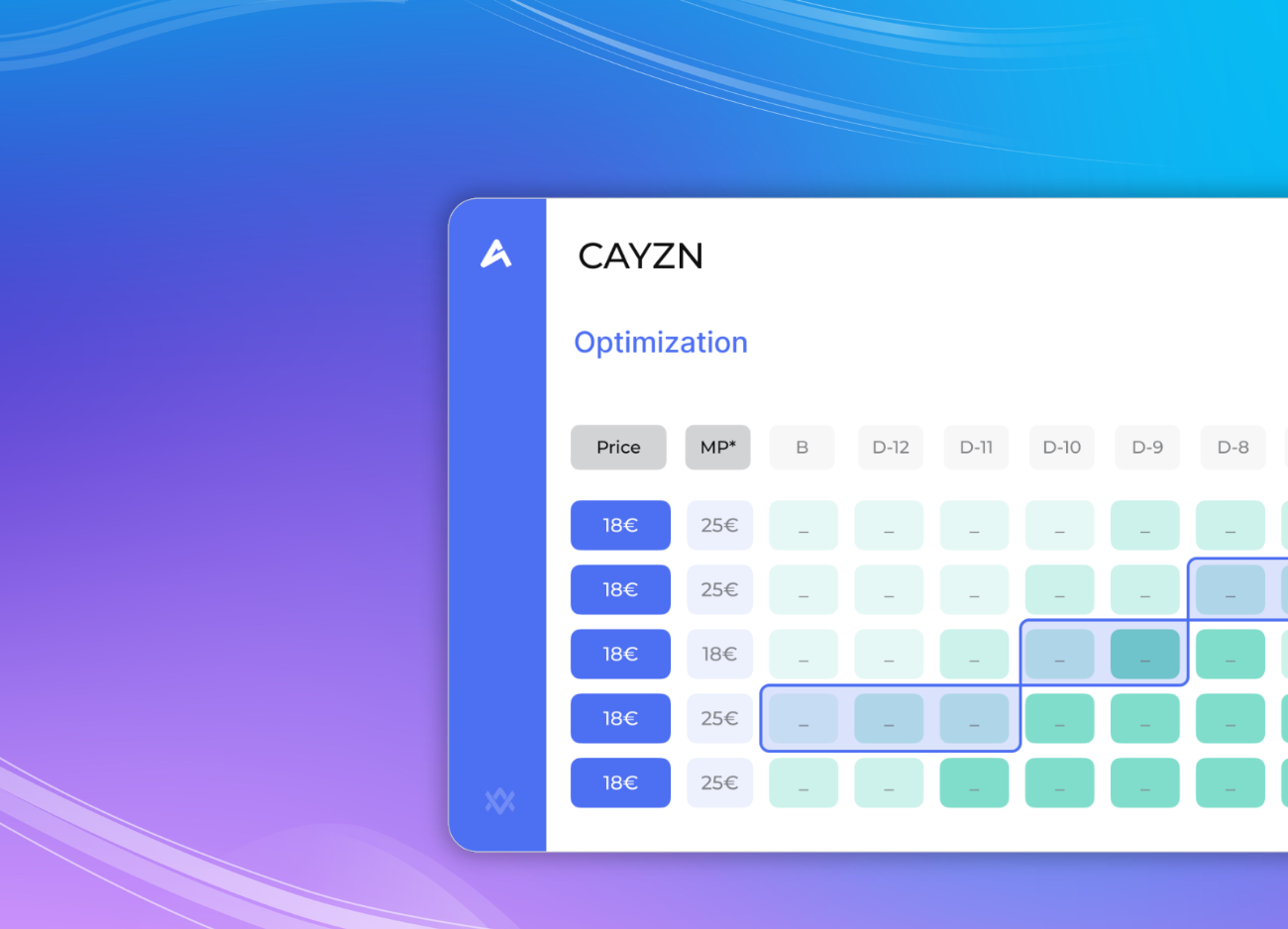.png)

Most revenue teams don’t lack algorithms, they lack confidence in the algorithm. Traditional AI models make recommendations that can be hard to explain to analysts or RM managers. If a pricing change can’t be justified, analysts hesitate to act, and potential revenue is lost.
The answer isn’t to ask people to “just trust the model.” The answer is to design AI so that humans can interrogate it, steer it, and hold it accountable. That’s the principle behind CAYZN AI, developed over the last decade with RM analysts in mind. It’s built to give them the right information, at the right time, in the right way.
This article is a guide to what transparency in revenue management really means day to day, which capabilities matter most, and how teams can adopt AI without losing control.
The term “explainable AI” can sound abstract. In revenue management it boils down to five concrete things:
You need to see where demand is expected to come from, at which price points, and how sensitive it is to changes. Practically, that means a demand matrix at Origin and Destination and fare-bucket level, paired with price‑elasticity views that reflect your specific history and market.
Why it matters: analysts can trace a recommendation to the underlying drivers (seasonality, events, pace, price response) instead of guessing.
No more “surprise” bucket moves. Before an optimization run, you should know what will change, when, and why: upcoming bucket shifts, trigger thresholds, and run cadence. Clarity here eliminates the instinct to switch automation off “just in case.”
Teams should be able to define intent and see how that translates into parameter changes. The model handles the heavy lifting; the team sets the direction.
Every automated or manual change should be traceable: who/what changed which parameter, when, and with what effect. Activity logs more than just a nice‑to‑have; they are necessary for oversight and post‑analysis
Transparent systems listen even when markets move. Real‑time intake of bookings and sales trends lets the engine self‑correct and re-optimise swiftly, so forecasts don’t shift and decisions don’t become outdated.
CAYZN AI is our transparent, high-performing AI forecasting and optimization engine designed to bring transparency, speed, and accuracy to forecasting and pricing decisions for passenger transport operators. It’s core capabilities include:
CAYZN AI combines machine learning and operational research to predict demand, measure price sensitivity, and recommend the most profitable actions, updating in real time as new booking data comes in.
Unlike “black box” RMS tools, CAYZN AI gives analysts full visibility into how and why recommendations are made. Every forecast, optimization, and adjustment can be traced, previewed, and fine-tuned, ensuring decisions align with business strategy.

08:45 — Maria, an RM analyst, reviews the Next‑Run Insights panel. She sees bucket changes scheduled at 11:00 for three Friday evening departures, driven by rising demand and elasticity softening at the highest fare.
09:10 — She opens the demand matrix for the busiest O&D. The model expects a mid‑week event to shift demand earlier. The elasticity view suggests a small price increase should not hurt bookings.
09:20 — The commercial team asks to prioritise load factor on a new leisure corridor. Maria switches the strategy to Volume, keeping guardrails in place. The preview shows the expected bucket exposure and revenue impact.
11:30 — A price anomaly is flagged. In the activity log, Maria traces it to a manual rule applied last month. She adjusts the rule, adds a note, and reruns optimization. The system explains what changed and why.
End result: fewer ad‑hoc overrides, faster decisions, and changes everyone can explain.
Big changes happen by taking one step forward. The pattern we see work often:
Transparent systems earn trust, and trusted systems get adopted. In competitive evaluation tests, CAYZN’s forecasting models have outperformed traditional systems. In one eight-month proof-of-concept with a European carrier, the CAYZN-managed scope delivered a +5% to +7% gain in RASK, adjusted by capacity. Even in the first 30 days, it showed +3.4% improvement.
“That's actually one of the features we like with Wiremind: not having this black box, but having a lot of transparency in the algorithm. It's baked into different layers and you see each time the process of the algorithm through each of these layers, so you understand exactly all the decisions that are being made, and in case you need to tweak something, you know exactly where to pinpoint.
This is really helpful for the team to understand if something goes wrong, where it can be wrong, and also to understand when the algorithm is going to kick in and what action it's going to take,” Jean-Loup Senski, Director of Revenue Management at Flair Airlines.
Our research team of 20+ engineers and researchers works with universities like Sorbonne and UBC. Check out our white paper on “Training and Evaluating Causal Forecasting Models for Time-Series” (with École Polytechnique & UBC).
AI works when people trust it enough to use it every day, and trust comes from clarity. When analysts can see the reasoning, preview the changes, and trace every action, they stop treating the system like a risk and start treating it like a partner. Discover CAYZN AI today with one of our product experts. Book a demo now.